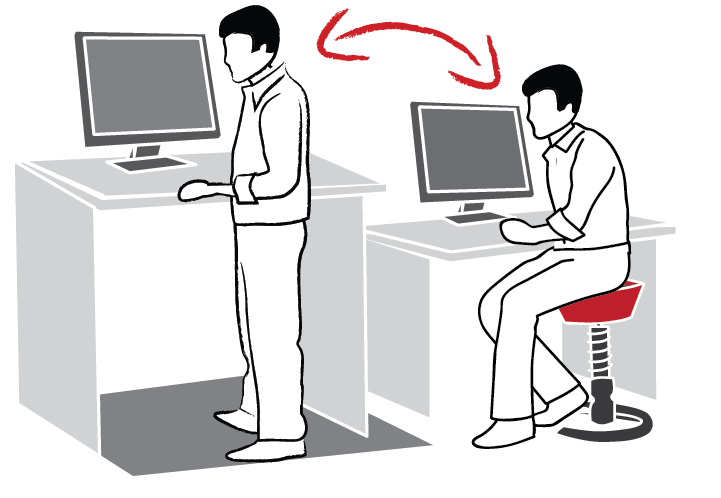sit-and-stand Desk Tracking
Over the past centuries, our lives have become more and more dominated by sedentary behaviors such as prolonged sitting. Particularly in the work context (e.g., office jobs), the number of tasks focused around sitting at a computer has increased markedly in the recent years, although a growing body of research has connected this sedentary lifestyle to a dramatic increase of health-related risk factors. In contrast to that, a physically active work process promotes the avoidance of prolonged sedentary behavior and related degenerative phenomena. Even small amounts of low-intensity physical activity accumulated throughout a day can provide substantial health benefits. Based on this fact, recent approaches have fo-cused on the motivation of reduced sitting, increased walking or standing activities (e.g., taking breaks, postural diversity, stand-up meetings), and the design of novel workspace environments that provide opportunities for integrating light activities into the daily office workflow.

Addressing this design opportunity, we studied a novel sit-and-stand workspace design that includes two work surfaces at sitting and standing height – which allows users to seamlessly switch between these work environments at any time. To get a better understanding of how people are working in such an environment, we performed an exploratory background study. The results allowed us to get a better understanding of the interplay between physically active workflows and computing activities, and how this may imply requirements for HCI design. From the study observations, we identify two basic approaches that for incorporating the concept of working different postures into the daily office work:
- Task-Driven approaches are based on the concept of associating a work task with a specific workstation, thus implicitly motivating people to take up different postures throughout a work day. Considering the experience of participants following a rather task-driven switching behavior, it becomes evident that this approach is strongly dependent on the daily work activities. While participants stated to perceive postural changes as rather natural side effect of their regular office work, it is on the other hand not suitable for tasks that are not performed on a regular basis.
- Self-Determined approaches are in contrast based on the concept of performing any work tasks at any workstation, leaving the participants free to change their posture at all times. Self-determined switching behavior turned out as a flexible approach that leaves people free to carry out their work in any posture, but is on the other hand associated with a certain cognitive demand and might not work during phases of high involvement in the ongoing task.
From the analysis of participants’ switching patterns, we se that self-determined approaches resulted in significantly longer standing periods, while task-driven approaches resulted in a higher number of posture alternations during a work day. A subsequent in-situ deployment over one year allowed us to gain an even deeper understanding on a long-term perspective. Over the course of time, we observed participants converge towards a hybrid approach, which was based on opportunistic alternation between work postures based on characteristic work styles that were commonly associated with sitting or standing work (e.g., concentration vs. communication, individual vs. collaborative, focus vs. overview). Based on the insights from these studies, we developed prototype systems that address the main identified design challenges such as physical-digital tool integration, ambient reminding, or tracking of movement dynamics and patterns.

